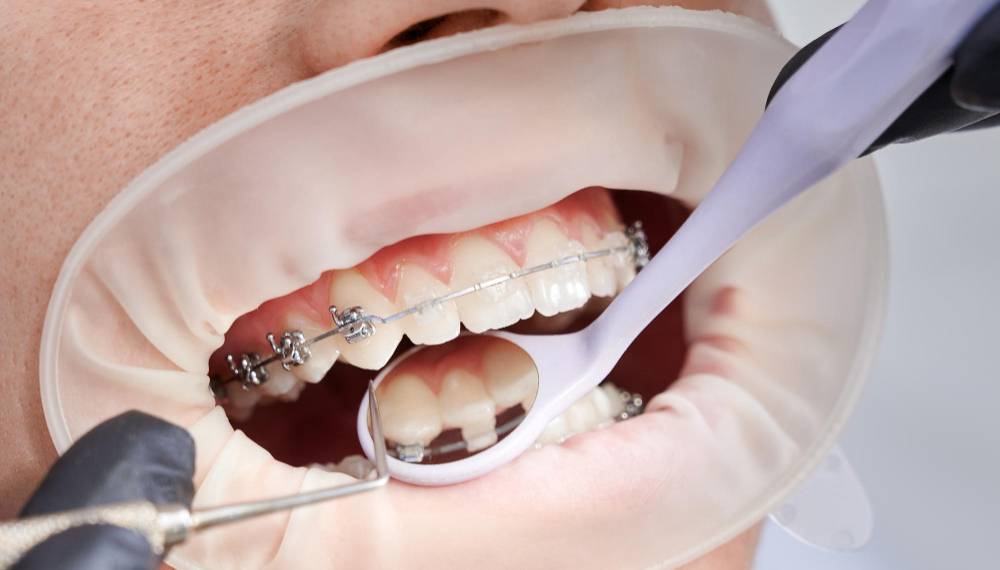Braces Orthodontic Treatment
Braces are a common orthodontic treatment used to correct misaligned teeth and jaws, improve bite function, and enhance overall dental aesthetics. Orthodontic treatment with braces can address a variety of issues, including overcrowding, gaps, overbites, underbites, and crossbites. Here’s an in-depth look at braces and orthodontic treatment:
Types of Braces
1. Traditional Metal Braces
- Description: Made of high-grade stainless steel, traditional metal braces consist of brackets bonded to the teeth and connected by a wire.
- Advantages: Highly effective for treating complex dental issues; generally less expensive than other types of braces.
- Disadvantages: Visible and may cause discomfort initially.
2. Ceramic Braces
- Description: Similar to metal braces but with brackets made of tooth-colored ceramic material that blends with the natural teeth.
- Advantages: Less noticeable than metal braces, offering a more aesthetic option.
- Disadvantages: Can be more fragile than metal braces and may stain if not properly maintained.
3. Lingual Braces
- Description: Attached to the back (lingual side) of the teeth, making them invisible from the front.
- Advantages: Completely hidden from view, making them an ideal choice for those concerned about aesthetics.
- Disadvantages: Can be more challenging to clean and adjust; may cause more initial discomfort.
4. Clear Aligners (e.g., Invisalign)
- Description: A series of removable, clear plastic trays that gradually move the teeth into the desired position.
- Advantages: Virtually invisible and removable for eating and cleaning; often more comfortable than traditional braces.
- Disadvantages: May not be suitable for severe orthodontic issues; requires strict adherence to wearing the aligners as directed.
Procedure for Braces Treatment
1. Initial Consultation and Assessment
- Examination: The orthodontist will perform a comprehensive examination, which may include X-rays, photographs, and impressions of the teeth.
- Diagnosis and Treatment Plan: Based on the assessment, a customized treatment plan is created, including the type of braces and the estimated duration of treatment.
2. Placement of Braces
- Examination: The orthodontist will perform a comprehensive examination, which may include X-rays, photographs, and impressions of the teeth.
- Diagnosis and Treatment Plan: Based on the assessment, a customized treatment plan is created, including the type of braces and the estimated duration of treatment.
3. Duration of Treatment
- Typical Duration: Treatment with braces typically lasts between 18 to 36 months, depending on the complexity of the case.
- Ongoing Monitoring: The orthodontist will monitor progress and make adjustments as needed throughout the treatment period.
4. Post-Treatment
- Removal: Once the teeth are properly aligned, the braces are removed, and a retainer is fitted to maintain the new position of the teeth.
- Retainers: Retainers are used to prevent teeth from shifting back to their original positions and are usually worn for a specified period, which may vary from patient to patient.
Benefits of Braces
- Improved Alignment: Corrects crooked or misaligned teeth, improving the overall function and aesthetics of the smile.
- Enhanced Oral Health: Straight teeth are easier to clean, reducing the risk of cavities and gum disease.
- Better Bite Function: Addresses issues like overbites, underbites, and crossbites, leading to more efficient chewing and speaking.

